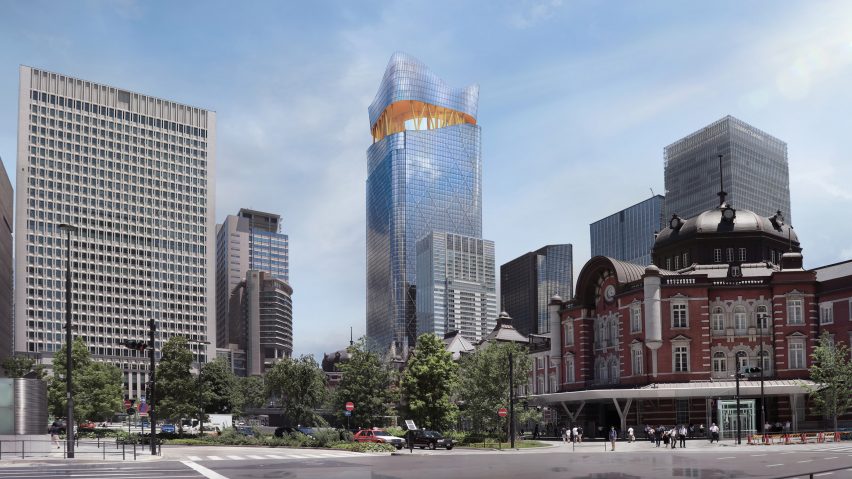Sou Fujimoto Architects will collaborate with Mitsubishi Jisho Sekkei to design the top section of the supertall Torch Tower skyscraper in Tokyo, which is set to become the tallest building in Japan.
The 390-metre-tall tower, which is being developed for a site in Chiyoda-ku, will feature a large public plaza and observation deck at its peak designed by Sou Fujimoto Architects and Mitsubishi Jisho Sekkei.
According to the studio's founder, Sou Fujimoto, the goal is to help make the tower "a place for people instead of an object".
Torch Tower forms part of a wider masterplan known as the Tokyo Torch that is currently being developed for a site spreading north of Tokyo Station. It is hoped to become a "town that brightens and energizes Japan".
The skyscraper will become the first part of the masterplan to reach completion, with a date planned for 2028. It will be the second high-rise completed on the site, following the completion of Tokiwabashi Tower in 2021.
Once complete, the Torch Tower will comprise 63 storeys above ground and four below. It is expected the plaza by Sou Fujimoto Architects and Mitsubishi Jisho Sekkei will be positioned at the point where the tower reaches 300 metres in height.
In the visuals released by Mitsubishi Jisho Sekkei, the plaza is shown as a large semi-outdoor space that mimics an undulating hill, surrounded by greenery and large openings overlooking the city.
It aims to challenge the usual placement of a public square at the base of a skyscraper and establish a "new typology of high-rise building", Fujimoto wrote in an Instagram post.
Alongside the plaza, Torch Tower is expected to contain offices, a hotel and commercial and retail outlets, as well as direct links to the nearby Tokyo Station.
Sou Fujimoto Architects was established by Japanese architect Fujimoto in 2000, with offices in both Tokyo and Paris. Other recent projects by the studio include the House of Hungarian Music, which is nearing completion in Budapest, alongside the mixed-use L'Arbre Blanc tower from which balconies fan out like leaves.
On a historic site in New York, the studio is also currently developing a co-living complex for The Collective that will see the studio make use of red brickwork for the first time.
Visuals are courtesy of Mitsubishi Jisho Sekkei.

